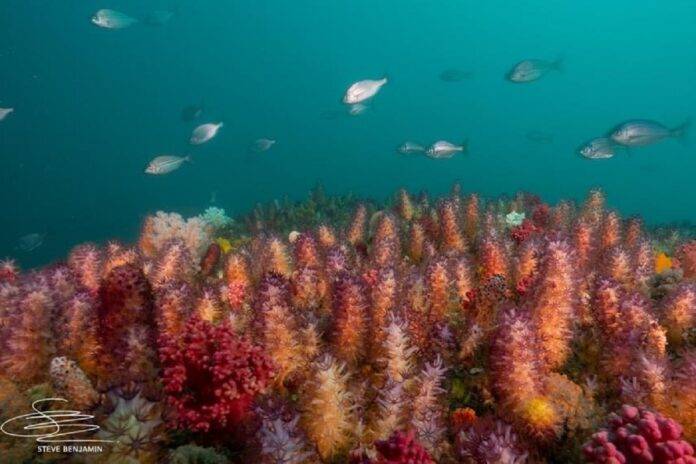The coral beds along the East coast of South Africa serve as vital refuges for endemic species such as the south coast rock lobster and seabream. These ecosystems provide a glimpse into the health of marine environments and the importance of conservation efforts in protecting biodiversity. In a recent publication in Fishing Industry News, Emeritus Professor Doug Butterworth initiated a debate on the role of marine protected areas (MPAs) in safeguarding South Africa’s marine environment. This discussion was further expanded upon by various experts in the field, including Peter Mbelengwa, Craig Smith, Kate Handley, Jack Walsh, and Mike Bergh.
Bergh’s analysis questioned the claim that MPAs are indispensable for sustainable fisheries management. He emphasized the need for early consultation and scientific justification before committing to MPA targets, especially in light of South Africa’s pledge to protect 30% of the world’s oceans by 2030 under the Kunming-Montreal Global Biodiversity Framework. The South African Deep-Sea Trawling Industry Association (SADSTIA) advocates for rigorous fisheries management over the expansion of MPAs, citing climate change as the primary driver of oceanic changes rather than fishing activities.
Studies have shown that MPAs alone cannot safeguard marine ecosystems from the impacts of climate change. While MPAs may enhance fisheries abundance within their boundaries, fish populations outside these areas remain vulnerable to external stressors. Proper fisheries management, based on scientific assessments and governance, has proven effective in promoting stock recovery and profitability within the fishing industry. SADSTIA and other stakeholders in the South African fishing industry emphasize the importance of adaptive management strategies in response to climate change impacts.
SADSTIA’s stance against the indiscriminate creation of MPAs is grounded in the belief that effective fisheries management, supported by robust scientific data, is key to sustainable practices. The association advocates for targeted closures in specific areas, such as spawning grounds, to enhance recruitment and protect vulnerable marine species. Collaborative efforts between government and industry, informed by scientific research, can lead to a balanced approach that benefits both the environment and the economy.
In conclusion, the debate surrounding the role of MPAs in marine conservation continues to evolve, with stakeholders like SADSTIA advocating for a science-based and consultative approach to fisheries management. By prioritizing adaptive strategies in response to climate change and focusing on sustainable practices, the South African fishing industry can contribute to the long-term health and resilience of marine ecosystems.


